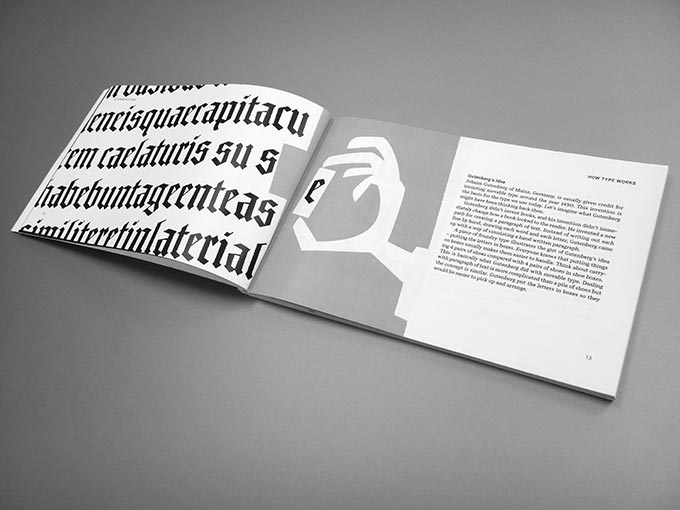Inside Paragraphs
Last weekend I finally picked up Inside Paragraphs, a book by the illustrator and type designer Cyrus Highsmith. Essentially the book is a primer into the typesetter’s world, with the succinct writing being wonderfully complemented by the format of the book and the charming illustrative style. This combination makes it effortlessly recommendable for those just entering the field, chiefly since the book doesn’t overcomplicate things by focusing on those familiar, unnecessary distractions common to similar books about typography. Instead, Highsmith describes the core foundations of the topic in how we ought to think about these alphabetic puzzle pieces.

He begins with the invention of typesetting:
Johann Gutenburg of Mainz, Germany, is usually given credit for inventing movable type around the year 1450. This invention is the basis for the type we use today. Let’s imagine what Gutenberg might have been thinking. [...]Gutenberg considered the counter space, letter space, and line space. Every paragraph, whether written or printed, has these white spaces in it. But they don’t have to be thought of in isolation. Gutenberg’s idea was to attach a certain amount of each kind of space to each letter. With this innovation he created a new kind of space: the glyph space.
I love this description for two reasons. First, Highsmith argues that Gutenberg didn’t just create the manufacturing process for printed typographic matter but designed an alternative typographic dimension with which to see these letters. Second, it makes type designers sound like intergalactic time travellers (which is sort of how I see them anyway).
You can find more information about this book over on its lovely micro-site.